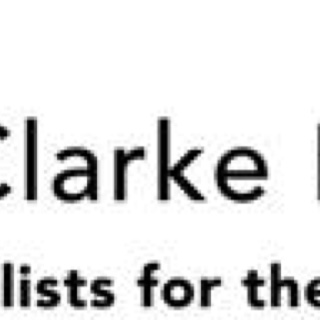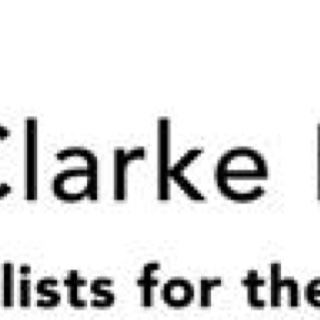Information
-
Month/Document No.
-
Audit Title
-
Client / Site
-
Conducted on
-
Prepared by
-
Location
-
Personnel
Rules of WIR 1. WIR reports must be sent to our subcontractors. 2. When job is being handed over to project manager/contracts manager they must prepare a plan of the project they are working on. Projects managers must also number each elevation and then refer to these numbers when conducting work inspection. 3. We have issued drawings reference D01, D02, D03, D04 and D05, these will refer to throughout WIR and clearly show what is required.
Reporting Rules: 1. Project Managers need to monitor quality of work constantly and keep good records of their findings as Quality of works is of the upmost importance to our company. 2. Generally there should be reports prepared for each elevation, where all assessed levels are listed. Each single report may include more than one elevations. However it must be clearly described in the introduction which facades have been examined and what works have been completed during the assessment 3. When job is being handed over to the project manager/contract manager. Project manager must prepare a construction plan/drawing of the project, number each elevation and then refer to these numbers when conducting Work Inspections. 4. Construction plan layout drawings with numbered elevations must be saved onto the M Clarke’s Reporting folder on the network. 5. Each report should include in the Introduction (cover page of report) description of the assessed façade (assigned number) along with description of type of works which were completed and assessed by the Project Manager. 6. We have issued drawings reference numbers D01, D02, D03, D04, D05... These are available in “M Clarke’s Guidance Booklet", and need to be referred to throughout WIR and clearly show what is required. 7. The report with error/failure marked RED, must be saved on the system. The next report that will follow must show how the error was rectified. If improvement was not possible e.g. Due to soft ground/lack of access- it needs to be described/explained. The answer’s column still need to be highlighted Red. However, if the error was rectified the section should be changed into green. The comment section is to be used for explanations of how and when the error was rectified. 8. If Project Manager has found an error during the assessment, it must be noted and fixed before consecutive stages of works progresses e.g. CP boarding cannot start before Metsec sub frame is properly fixed. Quality Control Manager cannot accept the next WIR report until everything is fixed and up to date on the previous report, this is to make sure that all errors are corrected, and there is no error omissions. 9. All reports have to be send to a main contractor and subcontractors.
Acceptance criteria/ Rules of Proper Workmanship 1. No work to be performed unless environmental conditions are as specified in therms of temperature, humidity and wind exposure. 2. Mixing time and proportions must be correct as per specification. 3. Safe systems of work must be enforced for working at height. EQITONE PLANNING & APPLICATION GUIDE MUST BE READ BEFORE WORKS BEGIN
A. Pre installation checks
-
1. Are conditions, and access to the place of works safe?<br>
-
Add media
A. Breather membrane
-
1. Has the correct and specified breather membrane been installed?<br>
-
Add media
-
2. Has the breather membrane been dressed out and over horizontal flashings / pods and taped and sealed?<br>
-
Add media
-
3. Has breather membrane been taped at vertical joints and overlapped 300mm at horizontal joints?<br>
-
Add media
-
4. Have all parts of EPDM properly overlapped and secured with Dafa tape?<br>
-
Add media
-
5. Have all location of EPDM, where fixings/bolts had to go through been secured/sealed with silicone?<br>
-
Add media
C. Battens
-
4. Were timber battens stored properly?
-
Add media
-
5. Are timber battens as per specification? Are timber battens of proper size so as to allow fixings spaced 30mm from the edge of the board, or as per specification?
-
Add media
-
6. Have timber battens been installed at correct centres, using correct fixings(vertically at 600 mm centres).?
-
Add media
-
7. Have timbers been adjusted to correct line and level?, have horse shoe packers been used?
-
Add media
-
8. Has insect mesh/ aluminium starting beads been installed correctly?
-
Add media
-
Signed by the project manager.
-
Signed by the main contractor representative.
B. Cement Boarding and sealing.
-
1. Has the CP- Board of correct/specified type and thickness been installed?<br>
-
Add media
-
2. Are the boards installed in a stretcher bond fashion?<br>
-
Add media
-
3. Are there 5mm joints around all edges?<br>
-
Add media
-
4. Has there been a 15mm gap left for floor deflection joints ?(Drawing Reference: D01, see MClarke reference booklet)<br>
-
Add media
-
5. Have the screws been fixed correctly (not over tight) into boards, using Nose Piece ? (Drawing Reference: D02. See MClarke reference booklet)<br>
-
Add media
-
6. Have the correct number of fixings(minimum of 25) been installed to each board?<br>
-
Add media
-
7. Has the CP board been installed with no bumps, gaps, and bows?<br>
-
Add media
-
8. Was Daffa tape applied to all CP Board joints?<br>
-
Add media
-
9. Has the EPDM been installed to deflection joints and concrete interfaces?<br>
-
Add media
-
10. Is CP Board fixed correctly at deflection track from floor to floor? Fixed to track and not studs?<br>
-
Add media
-
Signed by the project manager.
-
Signed by the main contractor representative.
-
Select date
PART D. INSULATED RENDER
-
1. Has the applicator been given all detail drawings, levels, locations of firebreak expansion beads?<br>
-
2. Has the applicator been given information of what way the adhesive is applied to board(dabs, grated trowel or picture frame).?<br>
-
3. Have all down pipes, vents, grounds, brackets etc. been installed on the wall and properly sealed?<br>
-
4. If permanent cappings are not in place, are temporary cappings on?<br>
-
5. Has the wall been checked for straightness before mesh was applied?<br>
-
6. Have all door frames and window frames been over lapped by insulation at a minimum of 10 mm in order to ensure of good sealing?<br>
-
7. Are down pipes on?<br>
-
8. Has mesh been properly overlapped at joints?<br>
-
9. Have two number of base coat been applied and sponged ?<br>
-
10. Is the wall suitable for application of the Acrylic coat? (Weather forecast must be checked before application)<br><br><br>
-
11. Is wall dry and free from bumps and hollows before application of Final coat?( must be checked with 2m straight edge)<br><br>
-
12. Has all protection been done?<br>
Insulated render/ Final Coat
-
1. Was specified primer applied evenly to the surface of reveals and walls?<br>
-
Add media
-
2. Was final coat applied during suitable weather condition as specified by manufacturer?<br>
-
Add media
-
3. Is the texture and colour of render consistent?<br>
-
Add media
-
4. Were curing conditions maintained?<br>
-
Add media
-
5. Were elements adjoined to render including: trims, sills, construction joints, opening frames, soffits, cappings etc. secured from dirt of adhesive, paints and top coat?<br>
-
Add media
-
6. Has work area been left clean on completion?<br>
-
10. Were insulation boards additionally fixed to the substrate with proper number of mechanical fixings?<br>(it must be remembered that different manufacturers/designers may recommend different fixing pattern for different systems. Method of Fixing is very often determined by bearing capacity and surface of the substrate. For most common method of fixings see MClarke Guidance Booklet Figure No. 6)<br>
-
11. Have two number of base coat been applied and sponged ?<br>
-
13. Is the wall suitable for application of the Acrylic coat? (Weather forecast must be checked before application)<br>
-
14. Is wall dry and free from bumps and hollows before application of Final coat?( must be checked with 2m straight edge)<br>
-
Add media
-
Signed by contract manager.
-
Signed by project manager.
-
Select date









